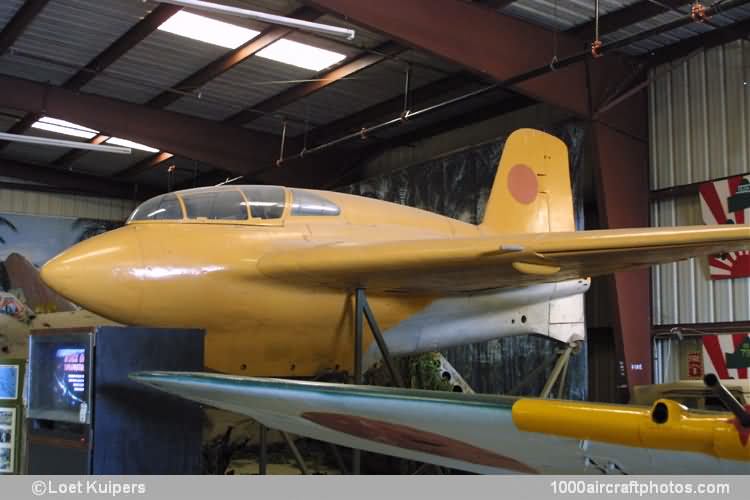In order to provide a nucleus of semi-trained pilots for the fighter, 56 similar wooden gliders were built by Maeda under the designation MXY7. Named Akigusa (Autumn Grass) the glider was flown in November 1944 and two were delivered to Mitsubishi. The first unpowered J8M1 flight was made on January 8, 1945, and fitted with a 3,300 lb (1,497 kg) Yokosuka Toku Ro.2 bi-fuel liquid rocket motor, the powered J8M1 flew on July 7, 1945, only a month before the end of WWII, but was subsequently destroyed. Only four more J8M1 were completed and six were almost completed.
The pictured aircraft had the Japanese code 403 before it was shipped by the USAAF Air Technical Service Command to the USA for evaluation under the Foreign Evaluation number "FE-300". From 1946 the evaluations were performed by the USAAF Office of Intelligence, and the number prefix changed from "FE" to "T2", hence "FE-300" became "T2-300".
Span: 31 ft 2 in (9.50 m)
Length: 19 ft 2.375 in (5.85 m)
Height: 8 ft 10.25 in (2.70 m)
Wing area: 190.843 sq.ft (17.73 sq.m)
Empty weight: 3,186 lb (1,445 kg)
Loaded weight: 8,598 lb (3,900 kg)
Max speed: 497 mph (800 kmh) at 32,810 ft (10,000 m)
Climb: to 32,810 ft (10,000 m) 3 min 30 sec
Powered endurance: 5 min 30 sec
